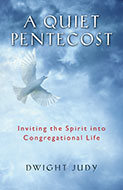Hesychasm is the Greek word in Eastern Orthodox Christian tradition for “inner and outward peace or tranquility.” It is the “peace that passes understanding,” promised by Jesus. Don’t you want to have some hesychasm these days? In the incessant negativity of our news feeds; in the contentious political climate; in the tedious continuing pandemic; in our school board meetings; in state and national legislatures; it seems humanity is enjoying being in a state of constant anxiety and turmoil… oh, yes, and in our denominational debates on who’s in and who’s out! As William Wordsworth wrote in 1807, “The world is too much with us.”
The answer of the earliest Christians was to retreat to the desert, similar to Jesus’ time in the wilderness. Here, according to Thomas Merton, these desert fathers and mothers sought “their own true self, in Christ.”* Ah, how can I be at home in the heart of Divine Love, mindful of the turmoil of “the world,” but not buffeted by it? Their answer was to continually anchor themselves in God’s Eternal Love and Goodness, and find their inner heart of freedom, discovering moments of hesychasm.
How marvelous that we have two months of Epiphany this year! Let’s practice hesychasm for these weeks, being the “light of Christ,” sending love, joy, peace, kindness, and generosity into the fragmented places of the world.
For myself, “I want to get me some hesychasm!” And share it with the world!
Dwight Judy
Epiphany, 2022
*Thomas Merton, The Wisdom of the Desert (New York: New Directions, 1970), p. 5.

